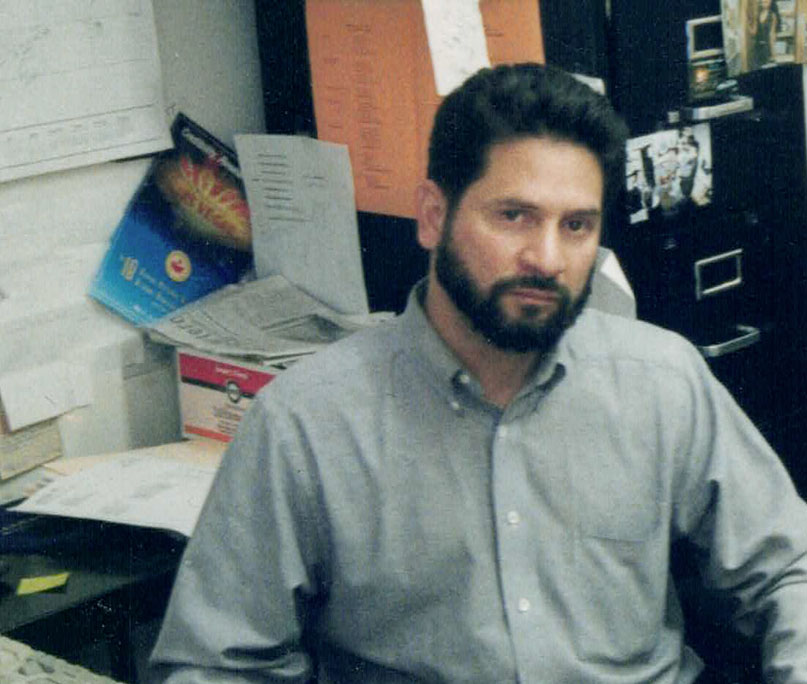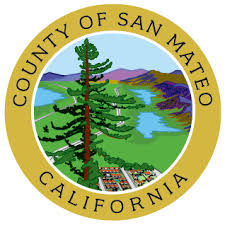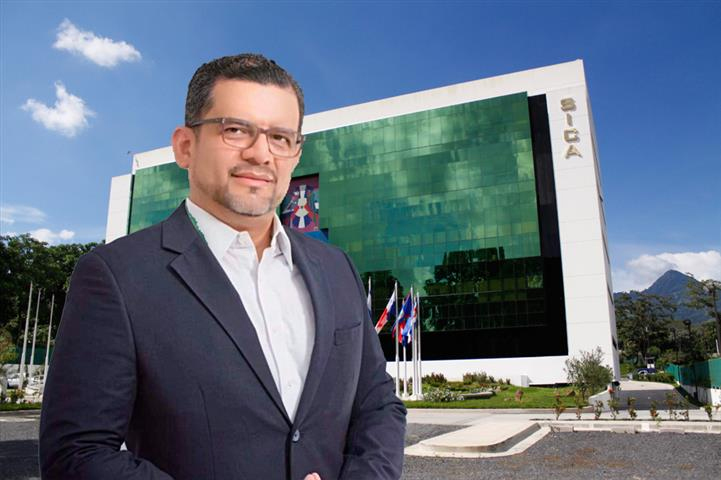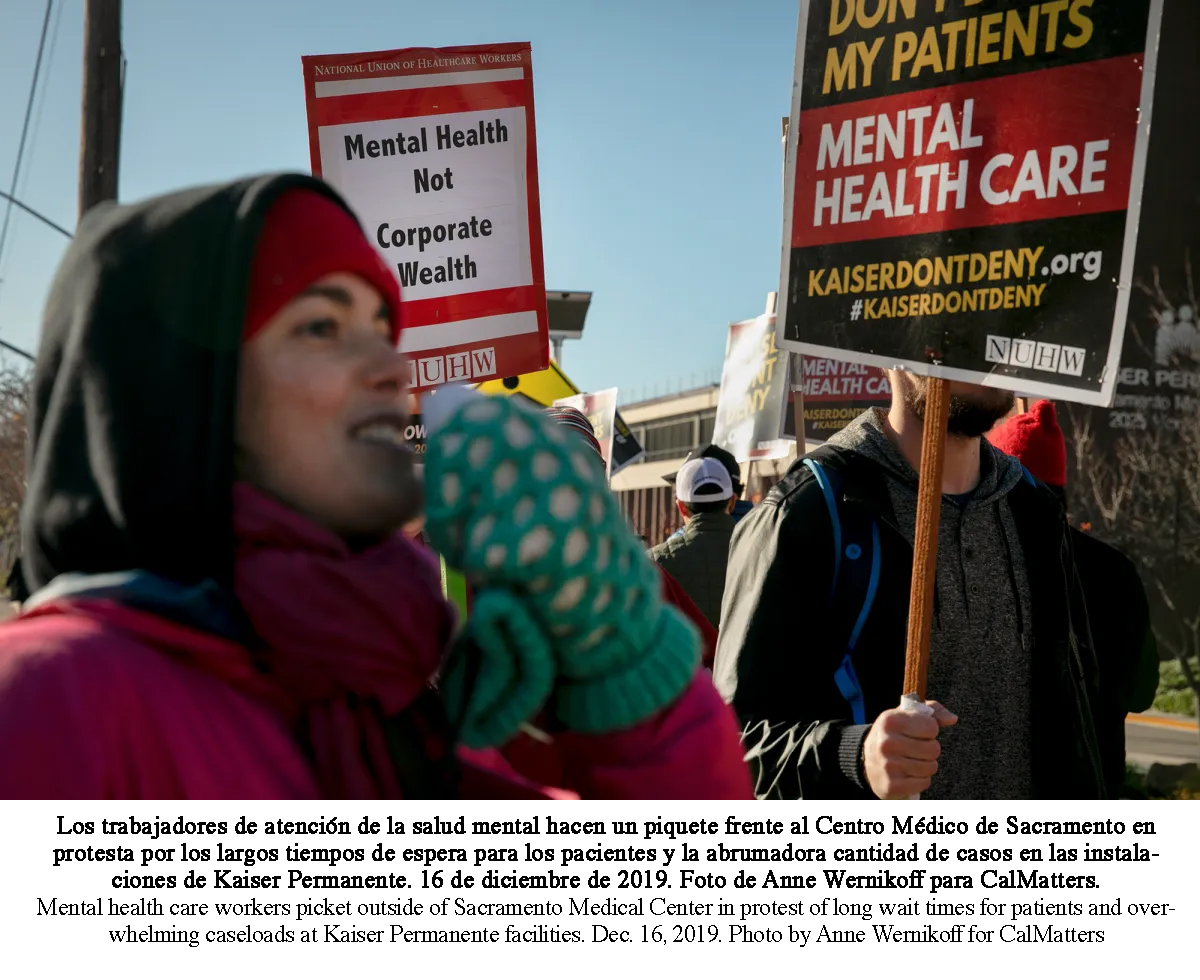NOTICE FROM THE CHIEF ELECTION OFFICER OF THE TIME AND PLACE OF THE STATEWIDE GENERAL ELECTION, FOR FEDERAL, STATE, COUNTY, SCHOOL DISTRICT, SPECIAL DISTRICT AND REGIONAL DISTRICT OFFICES TO WHICH QUALIFIED CANDIDATES WILL BE NOMINATED
NOTICE IS HEREBY GIVEN that a Statewide General Election will be held on Tuesday, November 8, 2022.
NOTICE IS HEREBY GIVEN TO ALL QUALIFIED PERSONS that elections will be held for the following offices in the County of San Mateo, State of California, for the purpose of electing members to Federal, State, County Offices, School Districts, Specials and Regional District listed below:
Federal and State Charges:
US Senator: Full Term: 6-year term beginning January 3, 2023
US Senator: Partial Term Not Expired
Representative in the US Congress, Districts 15 and 16: 2-year term beginning January 3, 2023
Governor: 4-year term beginning January 2, 2023
Lieutenant Governor: 4-year term beginning January 2, 2023
Attorney General: 4-year term beginning January 2, 2023
Secretary of State: 4-year term beginning January 2, 2023
State Comptroller: 4-year term beginning January 2, 2023
State Treasurer: 4-year term beginning January 2, 2023
Insurance Commissioner: 4-year term beginning January 2, 2023
State Board of Taxation, District 2: 4-year term beginning January 2, 2023
State Assembly, Districts 19, 21, and 23: 2-year term beginning December 5, 2022
Nonpartisan State Offices:
State Superintendent of Public Education: 4-year term beginning January 2, 2023
County Charges:
Board of Supervisors: District 2 and District 3: 4-year term beginning January 2, 2023
School Districts:
Board of Education, Trust Areas 1, 2 and 3: 4-year term
Bayshore Elementary School District: Three 4-year terms
Belmont-Redwood Shores School District: Three 4-year terms
Brisbane School District: Three 4-year terms
Burlingame Elementary School District: Two 4-year terms, One 2-year term
Cabrillo Unified School District, Trust Areas A, C and E: 4-year term
Hillsborough City School District: Three 4-year terms
Jefferson Elementary School District: Three 4-year terms
Jefferson Union High School District: Three 4-year terms
La Honda-Pescadero Unified School District: Two 4-year terms
Las Lomitas Elementary School District: Three 4-year terms, One 2-year term
Menlo Park City School District: Three 4-year terms
Millbrae Elementary School District: Three 4-year terms
Pacifica School District: Three 4-year terms
Portola Valley Elementary School District: Two 4-year terms, One 2-year term
Ravenswood City School District: Three 4-year terms
Redwood City School District, Trust Areas 2 and 5: 4-year terms
San Bruno Park School District: Trust Areas 2, 3 and 5: 4-year terms
San Carlos School District: Three 4-year terms, Two 2-year terms
San Mateo County Community College District, Trust Areas 2 and 4: 4-year terms
San Mateo-Foster City School District: Trust Areas 1 and 2: 4-year terms. In general: A period of two years
San Mateo Union High School District, Trust Areas 1, 3 and 5: 4-year terms
Sequoia Union High School District, Trust Areas A and D: 4-year terms
South San Francisco Unified School District, Trust Areas C, D and E: 4-year terms
Woodside Elementary School District: Three 4-year terms
Qualifications for the positions of Governing Board members as set forth in the Education Code are: any registered voter who is a resident of the school district, and who is not disqualified by the Constitution or state law from holding civil office.
Special Districts:
Bayshore Sanitary District: Two 4-year terms
Broadmoor Police Protection District: Two 4-year terms
County Coastal Water District, Zones 2 and 5: 4-year terms
Coastal Fire Protection District, Districts C, D and E: 4-year terms
Colma Fire Protection District: A period of 4 years
East Palo Alto Sanitary District: Two 4-year terms
Grenada Community Services District: Three 4-year terms
Highlands Recreation District: Three 4-year terms
Ladera Recreational District: Three 4-year terms
Menlo Park Fire Protection District: Three 4-year terms
NOTICE FROM THE CHIEF ELECTION OFFICER SAN MATEO COUNTY
ORDINANCE NO. 797 CITY OF MILLBRAE, COUNTY OF SAN MATEO STATE OF CALIFORNIA
ORDINANCE NO. 797
CITY OF MILLBRAE, COUNTY OF SAN MATEO STATE OF CALIFORNIA
***
AN ORDINANCE OF THE CITY OF MILLBRAE AMENDING SECTION 3.30.030 OF THE MILLBRAE MUNICIPAL CODE TO INCREASE THE UNIFORM TRANSIENT OCCUPANCY TAX
BE IT ORDERED BY THE CITY COUNCIL OF THE CITY OF MILLBRAE AS FOLLOWS:
SECTION 1. MODIFICATION OF THE CODE
The first sentence of Section 3.30.030, entitled “Tax Levy,” of the Millbrae Municipal Code is amended to read as follows:
“For the privilege of occupancy in any hotel, each passer-by is subject to and must pay a tax in the amount of fourteen percent of the rent charged by the operator, as of January 1, 2023.”
SECTION 2. PASSAGE AT A GENERAL MUNICIPAL ELECTION; EFFECTIVE DATE; PUBLICATION
This ordinance shall be in full force and effect on January 1, 2023, provided that the 2% increase in the transient occupancy tax as prescribed herein is approved by a majority vote of the electorate of Millbrae at the scheduled General Municipal Election. by November 8, 2022. Within fifteen (15) days of its adoption, this ordinance shall be published once in a newspaper of general circulation printed and published in San Mateo County and distributed in the City of Millbrae.
PRESENTED at a regular meeting of the Millbrae City Council held on July 12, 2022.
PASSED AND ADOPTED at a regular meeting of the City Council of the City of Millbrae held on July 26, 2022, by the following roll call vote.
[Signature]
Mayor
WITNESSED:
18693741.1
Ordinance No. 797
I hereby certify that the foregoing Ordinance was duly and regularly approved and adopted by the City Council of the City of Millbrae this 26th day of July, 2022, by the following vote:
YES:
COUNCILORS:
Olive, Papan, Fung, Holober, Schneider
IT IS NOT:
COUNCILORS:
None
ABSENT:
COUNCILORS:
None
ABSTENTION:
COUNCILORS:
None
TOILET:
COUNCILORS:
None
[Signature] 7/28/2022
Municipal secretary
RESOLUTION NO. 22 to 61 years
CITY OF MILLBRAE, COUNTY OF SAN MATEO STATE OF CALIFORNIA
ORDINANCE NO. 797
CITY OF MILLBRAE, COUNTY OF SAN MATEO STATE OF CALIFORNIA
***
AN ORDINANCE OF THE CITY OF MILLBRAE AMENDING SECTION 3.30.030 OF THE MILLBRAE MUNICIPAL CODE TO INCREASE THE UNIFORM TRANSIENT OCCUPANCY TAX
BE IT ORDERED BY THE CITY COUNCIL OF THE CITY OF MILLBRAE AS FOLLOWS:
SECTION 1. MODIFICATION OF THE CODE
The first sentence of Section 3.30.030, entitled “Tax Levy,” of the Millbrae Municipal Code is amended to read as follows:
“For the privilege of occupancy in any hotel, each passer-by is subject to and must pay a tax in the amount of fourteen percent of the rent charged by the operator, as of January 1, 2023.”
SECTION 2. PASSAGE AT A GENERAL MUNICIPAL ELECTION; EFFECTIVE DATE; PUBLICATION
This ordinance shall be in full force and effect on January 1, 2023, provided that the 2% increase in the transient occupancy tax as prescribed herein is approved by a majority vote of the electorate of Millbrae at the scheduled General Municipal Election. by November 8, 2022. Within fifteen (15) days of its adoption, this ordinance shall be published once in a newspaper of general circulation printed and published in San Mateo County and distributed in the City of Millbrae.
PRESENTED at a regular meeting of the Millbrae City Council held on July 12, 2022.
PASSED AND ADOPTED at a regular meeting of the City Council of the City of Millbrae held on July 26, 2022, by the following roll call vote.
[Signature]
Mayor
WITNESSED:
18693741.1
Ordinance No. 797
I hereby certify that the foregoing Ordinance was duly and regularly approved and adopted by the City Council of the City of Millbrae this 26th day of July, 2022, by the following vote:
YES:
COUNCILORS:
Olive, Papan, Fung, Holober, Schneider
IT IS NOT:
COUNCILORS:
None
ABSENT:
COUNCILORS:
None
ABSTENTION:
COUNCILORS:
None
TOILET:
COUNCILORS:
None
[Signature] 7/28/2022
Municipal secretary
RESOLUTION NO. 22 to 61 years
CITY OF MILLBRAE, COUNTY OF SAN MATEO STATE OF CALIFORNIA
State launches California student loan debt challenge

Deadline approaches to restructure public service student loans
by Suzanne Potter
California News Service
August 10, 2022 – The state has just launched the California Student Loan Debt Challenge, to let public service employees – like teachers, law enforcement, nurses, and government workers – know that time is running out to restructure their student loans.
The Biden administration has temporarily loosened the rules of the Public Service Loan Forgiveness program, which wipes away a person’s remaining college debt after 10 years on the job. But State Attorney General Rob Bonta warned that people need to apply for a waiver by October 31 – or miss out on tens of thousands of dollars in debt relief.
“Nearly 1 million Californians can qualify for Public Service Loan Forgiveness,” said Bonta, “but only about 10,000 have received it. So, let’s get those numbers up.”
The state is also asking public service employers to publicize the waiver to their workers, who can now claim credit for years of payments that had been excluded under previous rules – and thus reach the ten-year mark earlier.
The waiver applies regardless of the repayment plan, the loan type, or the timeliness and extent of past payments. Find out more on the website ‘studentaid.gov/pslf.’
Bonta pointed out that he sued the last administration because the Department of Education was denying the vast majority of PSLF applications.
“During the first round of eligible loan cancellations, the Trump administration denied 99 percent,” said Bonta. “My office sued, Congress took action, we joined with the advocates here – and ultimately, we won the fight.”
The state blames the low rate of participation on poor administration of the program, misconduct by some of the loan servicers, and a highly complex application process.
Support for this reporting was provided by Lumina Foundation.
Podcast: Busting fake reality

NOTE FROM THE EDITOR
Dear readers:
I ran into this article written by investigative journalist Jon Rappoport, which exposes a form of reality that is usually hidden in front of our eyes by the mainstream media, which for a long time I have considered it to be an instrument for mass mind control. And this short article breaks it down in an interesting way for the reader to get an eye opening into a different reality in its Podcast: https://jonrappoport.substack.com/p/new-podcast-busting-fake-reality#details – Marvin Ramírez.
The Job of the Century; The Knight’s Journey
Fake reality holds people and populations together. And not in a good way.
Engineered and self-imposed consensus makes possible all the high-level crimes that are designed to sink civilization into mass slavery.
In the podcast, I’m going to talk about ways we can BREAK the glue that binds people together in fake reality.
I’ll also explore the psychological and spiritual roots of people’s DESIRE to “surrender to the glue.”
As a journalist and writer, I have vast experience in this area. It’s been my target in everything I do.
Consensus is a strange creature. You can dismantle a chunk of it, and then it tends to grow back.
There’s a NEED people have to gloss over fractures in consensus reality and pretend they never happened.
If we were talking about a land war, we would say our troops took the city, then retreated, then took it again, then retreated—over and over again.
I used to know a woman during the health freedom movement of the 1990s who was a terrific researcher. She taught me things I never knew about Rockefeller medicine and germ theory and Big Pharma. She knew the scam from top to bottom. Plus she was an articulate outspoken advocate for individual freedom.
Two months after the declaration of the COVID pandemic, she was living in a small one-room apartment, wearing a mask indoors, very rarely venturing outdoors, and calling a friend every time she had the slightest symptom of a cold.
She’d busted fake reality big-time, but eventually she filled in all those cracks and painted over them and was totally buying into consensus.
Some version of this happens to many people every day.
The vanquished amoeba grows back.
There are many stories from the Middle Ages about the Knight who embarks on the mission of his life, to explore what lies beyond ordinary consensus reality. On his journey, he eventually comes to a threshold.
He knows if he crosses that line, his existence is going to become New. He doesn’t know how things will change, but they will. At that moment, all his conditioning tells him to turn around and go back.
But he doesn’t. He pushes on across the threshold. And then he finds out why he needed to push on. He finds the answer in himself.
Join me in this podcast.
Each one of us is a knight on that journey.
Jon Rappoport also writes at NoMoreFakeNews.com and OutsideTheRealityMachine.com
Study: Eating a starchy green banana daily can help stave off cancer
07/28/2022 – An international and long-term study recently published in the journal Cancer Prevention Research has confirmed that eating a starchy green banana daily can help stave off cancer.
Researchers from the University of Leeds and Newcastle University gave people with a high hereditary risk of cancer a diet high in resistant starch, which is abundant in banana when unripe. According to the study, the diet reduced the risk of some forms of cancer by more than half.
Resistant starch is found in a wide array of foods, including oats, breakfast cereal, pasta, rice, peas, beans and green bananas.
The study looked at almost 1,000 patients with Lynch syndrome, an inherited disorder that increases the risk of many types of cancer. Around 200,000 people in the U.K. are thought to have Lynch syndrome, though less than five percent know they have the said genetic condition.
While the diet did not reduce the risk of bowel cancers, it reduced the risk of cancers developing in other parts of the body by up to 60 percent. This was particularly strong for upper gastrointestinal cancers, including esophageal, gastric, biliary tract, pancreatic and duodenum cancers, which can be hard to diagnose.
The protection was observed to last for 10 years after people stopped taking the supplement for resistant starch. and experts hope the findings could also be beneficial to the general population, not just people with Lynch syndrome.
The study was a planned double-blind 10-year follow-up, supplemented with comprehensive national cancer registry data for up to 20 years in 369 of the participants.
John Mathers, an expert in human nutrition at Newcastle, said the findings are important as cancers of the upper gastrointestinal tract are difficult to diagnose and often are not caught early on.
“The dose of resistant starch used in the trial was roughly equivalent to that found in an unripe banana. Resistant starch can be taken as a powder supplement and is found naturally in peas, beans, oats and other starchy foods,” he said. “The starch in bananas resists breakdown and reaches the bowel where it can change the type of bacteria that live there.”
The researchers think resistant starch is fermented in the large intestine and alters the production of bile acids.
“We think that resistant starch may reduce cancer development by changing the bacterial metabolism of bile acids and reducing those types of bile acids that can damage our DNA and eventually cause cancer,” Mathers said.
Tim Bishop, an expert in genetics at Leeds, noted that the magnitude of the protective effect in the upper gastrointestinal tract was unexpected so further research is required to replicate the findings.
People with Lynch syndrome more likely to get cancer at a younger age
According to the Centers for Disease Control and Prevention‘s website, Lynch syndrome, also known as hereditary non-polyposis colorectal cancer, is the most common cause of hereditary colorectal cancer. People with this syndrome are more likely to get cancer at a younger age or before they reach the age of 50.
Lynch syndrome causes about 4,200 colorectal cancers and 1,800 uterine (endometrial) cancers per year. Estimates say that one in every 300 people may be carriers of an alteration in a gene associated with Lynch syndrome. Clues to whether there is Lynch syndrome in a family include diagnoses of colorectal, endometrial, ovarian and/or other cancers in multiple relatives on the same side of a family.
Apart from likely being diagnosed at a younger age, people with Lynch syndrome are also at an increased risk of developing multiple types of cancers during their lifetime.
Family members are more likely to have this condition if their family has a strong history of colorectal cancer. People who inherit Lynch syndrome usually share the same mutation.
For more stories about cancer prevention, visit PreventCancer.news.
Nicaragua chosen to lead the Central American Parliament (Parlacen)
by El Reportero cable services
GUATEMALA CITY, August 11 – The Central American Parliament (Parlacen) today confirmed Werner Isaac Vargas as Secretary General of SICA for the period 2022-2026.
Of Nicaraguan nationality, Vargas will hold the position in alternating order, according to a statement from the Central American Integration System (SICA).
In their social networks, they also published the gratitude of the Parlacen president, Guillermo Daniel Ortega Reyes, to the Board of Directors and the Honorable Plenary for the election of a figure with extensive experience and an outstanding role as an official in the Community Bodies.
“They trust that, during their administration, the Framework Laws approved by the regional Parliament on Tourism Biosecurity, Equal Access to Digital Services, Transportation and Migration and Mental Health will be promoted, for the benefit of citizens,” indicates the text dated this Thursday in the Guatemala City.
Likewise, it highlights that with its work dynamics, SICA will obtain a decisive boost, as well as the institutionality of the Community Bodies that, like the Parlacen, require the approval of the Reforms of its Constitutive Treaty to grant it binding powers.
Its importance becomes more important in the face of the new economic challenges in the region, affected by the Covid-19 pandemic and climate change, the note underlines.
From Managua, Vice President Rosario Murillo expressed her satisfaction with the support for the candidate of the Sandinista government by all the Central American presidents.
“Nicaragua’s right to be in the general secretariat of SICA. We are pleased, it fills us with pride to be able to represent paths of unity,” said Murillo.
Castillo calls for popular support and the Prosecutor’s Office opens a new investigation
LIMA, Peru August 11 – The Peruvian president, Pedro Castillo, turned his gaze towards the popular sectors in the face of the serious crisis he is facing, aggravated today when the Prosecutor’s Office formalized a fifth investigation of the president for alleged corruption. Castillo called for social mobilization against political and media pressure to resign, in meetings with hundreds of leaders of the Rondas Campesinas -agrarian and indigenous citizen security formations- and neighborhood organizations from the popular neighborhoods of Lima that gave him their support. . Press media and opposition politicians accused the government of inciting violence to avoid investigations, and conservative congresswoman Gladys Echaíz insinuated that Castillo’s call could qualify as incitement to terrorism.
Waldemar Cerrón, an ally of the executive, proposed in today’s plenary session that the investigations be allowed to continue until their conclusion and that Congress dedicate itself to its specific work.
In his meetings with social leaders, Castillo reiterated his complaint of a conspiracy against him, from Parliament and the Press and to the National Prosecutor’s Office, whose head, Patricia Benavides, denied it and stated that he only fulfills his duty “whoever falls”.
Benavides today formalized the fifth investigation for alleged corruption in the Ministry of Housing by a “criminal organization.”
According to the fiscal hypothesis, similar to those of the other investigations, Castillo would be at the top of the alleged criminal group, supported by the former head of that portfolio and recently appointed Minister of Transport and Communications, Geiner Alvarado, and by relatives of Castillo, such as his sister-in-law, Yenifer Paredes.
The young woman, putative daughter of Castillo and her wife, Lilia Paredes, surrendered yesterday to the Prosecutor’s Office, which the day before had raided the presidential residence to arrest her, which caused Castillo’s message in which he denounced the alleged conspiracy.
Paredes presented herself to the Public Ministry when a concentration of Rondas Campesinas raised her demands before the Public Ministry and applauded her when she entered her headquarters.
Kaiser mental health workers signal open-ended strike in Northern California
Ethnic News Services
A union representing 2,000 Kaiser Northern California mental health workers this morning announced plans for an open-ended strike beginning Aug. 15.
Among the reasons union representatives outlined: high clinician workloads and patients waiting weeks or even months for mental health care. Even as demand for care has surged, frustrated therapists are abandoning the health giant, said union spokesperson Matt Artz.
“We don’t take striking lightly,” Sal Rosselli, president of the National Union of Healthcare Workers, which represents the clinicians, said in a prepared statement, “but it’s time to take a stand and make Kaiser spend some of its billions on mental health care.”
Deb Catsavas, a senior vice president at Kaiser Permanente, said in an emailed statement that the threat of a strike is “sadly, a bargaining tactic this union has used every time it has bargained a new contract.”
Calling the union’s tactics “unethical and counterproductive,” Catsavas said the two sides were “close to an agreement” and that Kaiser is “committed to bargaining in good faith to reach a fair and equitable agreement that is good for our therapists and our patients.”
The company has drawn increased scrutiny from lawmakers for its mental health services in recent years. In May, the Department of Managed Health Care announced that it would be conducting a non-routine audit of Kaiser’s mental health services.
The union and Kaiser have one more bargaining session planned for Friday, Artz said. He said Kaiser Northern California’s mental health workers, including psychologists, social workers, therapists and addiction counselors, have gone on strike for short amounts of times six times in the past 4 years. This would be their first open-ended strike, which means the union is not establishing an end date.
Kaiser has 4.6 million enrollees in Northern California, Artz said, though that figure does not reflect how many currently access their mental health benefits.
In a letter sent Sunday to the Department of Managed Health Care, which regulates health plans, the union asked the department to ensure that Kaiser continues providing mental health care to patients during the strike, rather than canceling appointments.
Amanda Levy, deputy director for health policy and stakeholder relations for the Department of Managed Health Care, said the department is continuing to monitor access to services for patients impacted by the strike.
“The law requires health plans provide enrollees with medically necessary care within timely access and clinical standards at all times, which includes during an employee strike,” she said in an emailed statement.
Despite growing efforts at the state level to enforce mental health parity laws, Kaiser mental health practitioners say they still struggle to provide adequate and timely care for patients.
Sarah Soroken, who has worked as a therapist at Kaiser Fairfield for six years, said access to treatment has worsened during her time there. She said the pandemic has aggravated the situation, with more patients seeking care, even as more therapists are leaving.
“Right now we’re at a crisis point,” she said. “Things are worse than ever.”
Kaiser is not the only provider facing a shortage of mental health practitioners. Complaints of shortages also have been raised by counties, school districts and non-profit organizations around the state. Artz said some Kaiser providers are being recruited to work at telehealth start-ups, where money is good and work-from-home options abound. Others are entering private practice.
The union says the rate at which mental health clinicians are leaving Kaiser nearly doubled in the past year, with 668 clinicians leaving between June 2021 and May 2022, compared to 335 clinicians the previous year. In a union survey of 200 of those departing clinicians, 85 percent said they were leaving because their workload was unsustainable or they felt they did not have enough time to complete the work, and 76 percent said they were unable to “treat patients in line with standards of care and medical necessity.”
Some of these concerns are not new, although the pandemic has exacerbated them.
In 2013, the Department of Managed Health Care fined Kaiser $4 million for failure to provide adequate mental health treatment.
In a hearing this spring, lawmakers raised concerns about the state’s plans to move an additional 200,000 Medi-Cal members onto Kaiser, given problems with mental health treatment. Democratic Sen. Scott Wiener of San Francisco has introduced a bill to significantly increase fines for health plans that fail to comply with state laws.
Another bill of Wiener’s, SB 221, which took effect July 1, is intended to ensure patients don’t face long delays for follow-up treatment through commercial providers like Kaiser. Specifically, the new law, which was sponsored by the union, requires that patients receive follow-up mental health care within 10 business days unless a provider determines that a longer wait will not be detrimental to the patient.
At a virtual press conference in late June, Kaiser mental health practitioners said the health giant wasn’t close to meeting those requirements.
‘Forgiveness’ and the sticky question of justice in Mexico
After decades of violence, how can Mexicans be ready to forgive?
From narco-sanctioned music to secret videos and public banners, some Mexican drug traffickers have asked for forgiveness. But after decades of violence that, most recently, led to the murder of two Catholic priests, will Mexicans ever be ready to forgive?
It is about 90 seconds into what is a typical ranchera-homage, or narcocorrido, of Ovidio Guzmán — one of three brothers known collectively as the Chapitos, a faction of the modern-day iteration of the powerful Sinaloa Cartel — when the lead singer of the group, Código FN, suddenly feels the need for an aside.
“Oh, and by the way, I would like to apologize for the Culiacanazo,” he hums, making reference to the violent October 2019 upheaval against authorities that followed Guzmán’s brief detention in Culiacán, the city that has long served as the Chapitos’ headquarters. “I didn’t fight,” the singer continues on behalf of Guzmán in the video in which he is frequently surrounded by burning vehicles. “The wellbeing of my daughters comes first.”
The Culiacanazo paralyzed the city for more than five hours. Amidst the chaos, the government backed down and freed Guzmán. But for the traffickers, there was still a need for atonement. During the fighting, between eight and 14 people died, and many others were injured. Cars were burned to hem in government forces, and gunfights put hundreds at risk and closed businesses and schools.
Perhaps even worse, armed men invaded the local army barracks and kidnapped several family members of army personnel, crossing a symbolic line that has long been respected by both sides (and kept an unwritten détente between them in place in areas like Culiacán).
However, that code, which ostensibly includes leaving “civilians” (and even soldiers’ families housed in enemy territory) alone, has never been particularly clear and is harder to enforce. This was evident most recently in northern Mexico where two priests and a tourism guide were killed in late June, allegedly by drug traffickers who chased the guide into a church where he’d sought refuge.
In response, Mexico’s archdiocese, in a rare confrontational editorial in its weekly publication, called on President López Obrador to “examine the security strategies.” And while the Catholic Church hierarchy may not speak for the entire Catholic clergy (in years past, other prominent priests, such as Alejandro Solalinde Guerra, have asked for “forgiveness” from the narcos, who he considers victims of neoliberal economics and corrupt politics), it remains an important barometer.
The “strategies” are popularly known as abrazos no balazos (hugs, not bullets), a reference to something López Obrador floated during his presidential campaign but has only partially followed as president. The idea is to ratchet down the tensions between the government and criminal groups, and open space for reconciliation via a less repressive approach than his predecessors.
For many, the Culiacanazo is the illustration of the strategy’s abject failure. AMLO, as he is popularly known, defended his decision to release Guzmán and withdraw the security forces, telling the media a couple of years after the event he did not want to “put at risk the population” or “civilians.” But AMLO has also used the security forces to go after criminal groups in much the same way as his predecessors. He has continued to arrest the heads of criminal organizations and deploy troops in large numbers to quell violence and criminality.
The results are mixed. Murder rates over the course of his administration are down only slightly from their record high. Of course, not all of these are organized crime-related murders, but a good portion are. What’s more, thousands have disappeared or fled the violence. Others have been forcibly recruited or trafficked by criminal groups. And still others have been forced out of business or school, as was clear on the day of the Culiacanazo when the city suddenly stopped.
Criminal groups try to make up for these barbarities by issuing public statements that often blame the authorities or rival groups; by buying off the public with public works projects, large festivals, or handouts; or by calling for and often providing vigilante justice against the perpetrators.
Following the murder of the two priests, for instance, purported members of the Jalisco New Generation Cartel issued a video asking other groups not to mess with priests, doctors, or teachers. “The war is between us,” one of the masked members said, reading from a script while surrounded by other, well-armed masked men.
When none of this works, the criminals often ask for forgiveness. Guzmán first issued a statement in 2019 on social media, saying via Instagram that he would like “to apologize for all the actions that were taken.”
By then, the passive-voice, narco-apology was a tradition of sorts. In 2013, the Knights Templar (Caballeros Templarios) asked for “forgiveness” following “commentary and criticism” in Michoacán, their home territory, in a message scrawled on a banner. In 2015, after numerous gun battles in Jalisco, the CJNG hung dozens of banners in the state promising people that the “problem is not with you.”
And in 2016, while speaking to a reporter, Rafael Caro Quintero — the long-time drug trafficker and, until recently, Mexico’s most sought-after fugitive — asked for forgiveness of “Mexican society for all the errors that I committed,” as well as the family of the murdered Drug Enforcement Administration agent for which he was once condemned to 40 years in a Mexico prison.
Just how these apologies fit into AMLO’s larger plan for hugs, not bullets is not clear. During his campaign, he floated the idea of an “amnesty” for narcos, “if and when it has the support of the victims, the family members of the victims.”
But after being elected — aside from a reference to the possibility of commuting the sentences of prisoners over the age of 65 who had been tortured — he has largely cloaked his idea of forgiveness in vague, quasi-religious terms. As president, he has also refused to spell out publicly if he is talking about judicial forgiveness in the form of an amnesty or pardons for narcos, religious forgiveness in the form of priestly or pastoral absolution, or narco-forgiveness of the type Guzmán and Caro Quintero seem to be asking for.
For many Mexicans, it may not matter. In addition to some parts of the Catholic Church hierarchy, victims’ organizations have routinely rejected this softer approach, with one prominent representative of the victims of narco-violence summing it up nicely when she said they would accept “neither forgiveness nor forgetting” in their fight to get justice.
In the days that followed the archdiocese’s blistering editorial, the two sides later appeared to move closer when the National Bishops Conference issued a statement “to unite us in a call for peace.” AMLO, in one of his morning press conferences, said he “supported” that statement without committing to any concrete steps.
Still, the lines remained clear: Forgiveness will not come easy from a society bloodied and battered from years of conflict, or even from an institution that is built on that very premise.
Reprinted from InSight Crime. Steven Dudley is a writer with InSight Crime, a foundation dedicated to the study of organized crime.
NOTICE OF VOTE MEASURES IN THE CITY OF REDWOOD CITY
NOTICE IS HEREBY GIVEN that the following two measures will be voted on at the general municipal election to be held in the City of Redwood City on Tuesday, November 8, 2022.
REDWOOD CITY ELECTION PROCEDURES AMENDMENT
MEASURE ____
Amendment to the Redwood City Election Procedures Charter. Shall the measure amending the Redwood City Charter to align the date of the Redwood City General Municipal Election with the date of the Statewide General Election, clarify the date on which the election
of Redwood City must be certified and the City Councilors must be sworn in, and provide for the election of City Councilors by district to comply with state law, shall it be adopted?
Otherwise _________
AMENDMENT TO THE REDWOOD CITY MAYOR’S TERM CHARTER ACT MEASURE ____
Amendment to the constitutive act of the mandate of the mayor of the city Redwood City. Should the measure amending the Redwood City Charter be adopted to shorten the Mayor’s term from two years to one year in order to allow more Council members to serve as Mayors during their tenure on the City Council?
Otherwise _________
For more information or to obtain a copy of the Resolution, contact City Clerk Pamela Aguilar at (650)780-7220 or paguilar@redwoodcity.org.
NOTICE IS FURTHER GIVEN that the primary arguments for or against each of the measures
above may be submitted in writing to the Office of the City Clerk, 1017 Middlefield Road, Redwood City, CA 94063 for printing and distribution to the voters, in accordance with the provisions of the California Elections Code, no later than 5:00 p.m. August 2022. Rebuttal arguments by the authors of said primary arguments that have been selected to be printed in the voter information guide may likewise be filed before 5:00 p.m. on August 29, 2022.
The printed arguments presented to the voters shall be titled “Argument In Favor Of Measure ___” or “Argument Against Measure ___” and “Rebuttal Of Argument In Favor Of Measure ____” or “Rebuttal Of Argument Against Measure ___”, respectively. All arguments related to the above measures must be accompanied by the printed names and signatures of the authors presenting them. All arguments will have the following form:
The undersigned proponent(s) or author(s) of the argument __________ (principal/rebuttal)
____________ (for/against) ballot measure ___ at ____________________ (title of
election) for ____________ (name of jurisdiction) to be held on ______________ (date
election), hereby declares that said argument is true and correct according to
______________ (your) knowledge and beliefs.
Signed Date
____________________________ ______________________________
____________________________ ______________________________
No main argument for any measure shall exceed 300 words. Only one argument for and one argument against each measure will be selected for printing and distribution to voters. No more than five signatures should appear along with any argument.
The authors of the main arguments both for and against each measure that have been selected to be printed in the voter information guide may prepare and present rebuttal arguments not to exceed 250 words. The authors may authorize in writing any other person or persons to prepare, present or sign the rebuttal arguments. No more than five signatures will appear in conjunction with any rebuttal argument.
All arguments must be accompanied by the original signatures of the authors and must therefore be submitted in person. Contact City Clerk Pamela Aguilar at (650)780-7220 or paguilar@redwoodcity.org to schedule an appointment to present arguments before the deadline.
NOTICE IS FURTHER GIVEN that an evaluation period of ten calendar days will be set for the public review of said arguments. During this time, any registered voter eligible to vote on the measure, or the election official, may apply for a writ or court order requiring any or all of the materials to be changed or removed. The review period of the
primary arguments for or against the ballot measures will begin at 5:00 p.m. on August 19, 2022 and will end at 5:00 p.m. on August 29, 2022. rebuttal review
FREE Music on the Courthouse Square – downtown Redwood City
Celebrating its Sweet 16 anniversary through September 2
Compiled by the El Reportero‘s staff
A favorite at the Redwood City Salsa Festival, “Edgardo & Candela” returns to combine dancing styles like Mambo, Cha-Cha-Chá, Merengue, Bolero, Bachata, Timba, Cumbia and much more. A great audience communicator and seasoned performer, Edgardo will assure that everyone is entertained while he mixes singing tunes by classic legends and the real treat: Edgardo’s original music, presenting him as a poetic lyricist and accomplished writer.
With top-quality local and national musical performers — from rock and reggae, to Salsa and much more— music fans of all ages will be thrilled to discover and enjoy the most popular summer concert series on the Peninsula! Redwood City is well known for its events, but Friday night’s Music on the Square is one of the most treasured nights of summer.
Aug. 5, Native Elements; Aug. 12, Edgardo & Candela; Aug. 19, Foreigner Unauthorized; Aug. 26, Foreverland, September 2, Steel ‘n’ Chicago
Edgardo & Candela – Salsa 6-8 p.m., Friday Aug. 12. FREE
At the Courthouse Square, 2200 Broadway, Redwood City. For more info call 650-780-7311.
https://www.redwoodcity.org/musiconthesquare
Video at: https://www.youtube.com/watch?v=djlFKVRSTng
Tahoe Heartbeat Festival a music, art, culture, and community Benefit Event
Born from the desire to promote musical arts, conscience awareness, sustainability and green community efforts, Tahoe Heartbeat Festival will feature a full day and evening of national music headliners, local artists, arts & craft vendors, food & beverage offerings, games and more. All ages, families welcome, vendor village, food and beverage trucks.
Featuring Thievery Corporation, Trevor Hall, Ozomatli and more.
This fundraising event will benefit Tahoe Fund, a local 501c3 organization dependent on private funding to spearhead environmental projects around the Lake Tahoe Basin with an emphasis on forest health, lake clarity, sustainable recreation, transportation and stewardship. The Tahoe Fund provides a common vision from which to build a sustainable future for this irreplaceable resource and for those who cherish and enjoy this mountain landscape.
Saturday, Aug. 20, 2022 at 2 p.m., at Lake Tahoe Community College Outdoor Playing Fields, 1 College Dr. South Lake Tahoe, CA. Tickets on sale now: tahoeheartbeatfestival.com. To benefit the Tahoe Fund.








